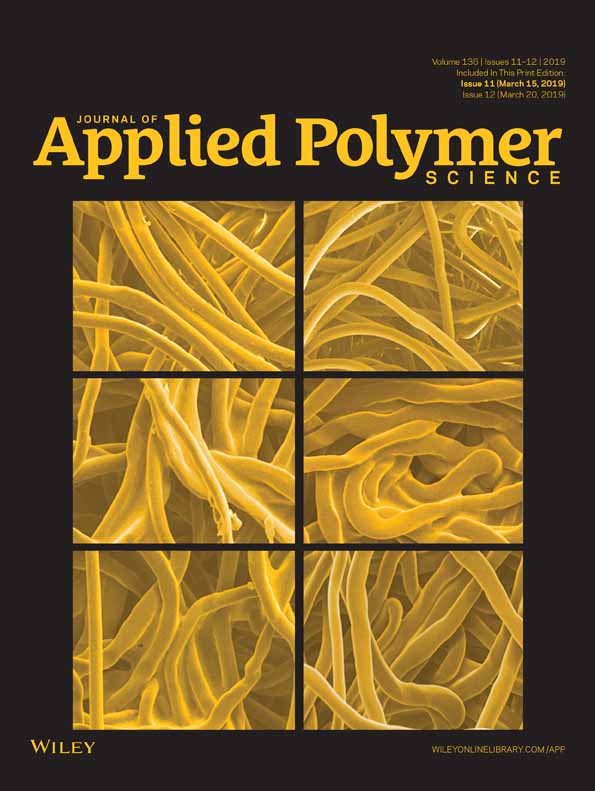Effect of lignin esters on improving the thermal properties of poly(vinyl chloride)
ABSTRACT
To improve the thermal stability of poly(vinyl chloride) (PVC) and the utilization of lignin (L), different L esters were added to PVC to produce the plates with enhanced thermal stabilities. The properties and structures of the L ester–PVC plates and the properties of the L esters and their mixtures with PVC were analyzed by universal mechanical testing, static thermal stability testing, thermogravimetry–Fourier transform infrared (FTIR) spectroscopy, UV–visible spectroscopy, FTIR spectroscopy, scanning electron microscopy, and differential scanning calorimetry. The results show that L improved the thermal stability of PVC, but the mechanical properties were substantially deteriorated. Proper esterification of L improved the thermal stabilities and mechanical properties of the plates. Noncyclic anhydride acetylated L–PVC plates possessed good static and dynamic thermal stabilities and mechanical properties. The PVC plates incorporated with the L esters with a degree of esterification of around 40% exhibited the best combination properties. Maleated L–PVC plates had good dynamic thermal stability and mechanical properties but poor static thermal stability. The opposite properties were found for succinylated L–PVC plates. The differences in the properties of different L ester–PVC plates were attributed to the different abilities of L esters to capture free radicals, the crosslinking reaction between L esters and PVC, and their compatibility. Different properties of the L esters indicated their different applications. © 2018 Wiley Periodicals, Inc. J. Appl. Polym. Sci. 2019, 136, 47176.




